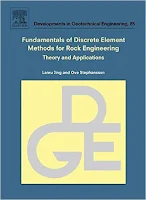Corrosion of Steel In Concrete: Understanding Investigation and Repair
J. P. Broomfield ... 264 pages - Publisher: CRC Press; 1st edition (December, 1996) ... Language: English - ISBN-10: 0419196307 - ISBN-13: 978-0419196303 ...
The corrosion of reinforcing steel in concrete is a major problem facing civil engineers and surveyors throughout the world today. There will always be a need to build stuctures in corrosive environments and it is therefore essential to address the problems that result. Corrosion of Steel in Concrete provides information on corrosion of steel in atmospherically exposed concrete structures and serves as a guide for those designing, constructing and maintaining buildings, bridges and all reinforced concrete structures. The present state of knowledge of corrosion of steel in concrete is reveiwed from theory, through to site investigations using the currently available corrosion assessment equipment. There is also a section on building structures to be more corrosion resistant and new developments we can expect. This is a book to educate and guide engineers, surveyors, students and owners of structures so that they will have a clearer idea of the problems of corrosion, its causes and how to find solutions
The corrosion of reinforcing steel in concrete is a major problem facing civil engineers and surveyors throughout the world today. There will always be a need to build stuctures in corrosive environments and it is therefore essential to address the problems that result. Corrosion of Steel in Concrete provides information on corrosion of steel in atmospherically exposed concrete structures and serves as a guide for those designing, constructing and maintaining buildings, bridges and all reinforced concrete structures. The present state of knowledge of corrosion of steel in concrete is reveiwed from theory, through to site investigations using the currently available corrosion assessment equipment. There is also a section on building structures to be more corrosion resistant and new developments we can expect. This is a book to educate and guide engineers, surveyors, students and owners of structures so that they will have a clearer idea of the problems of corrosion, its causes and how to find solutions





